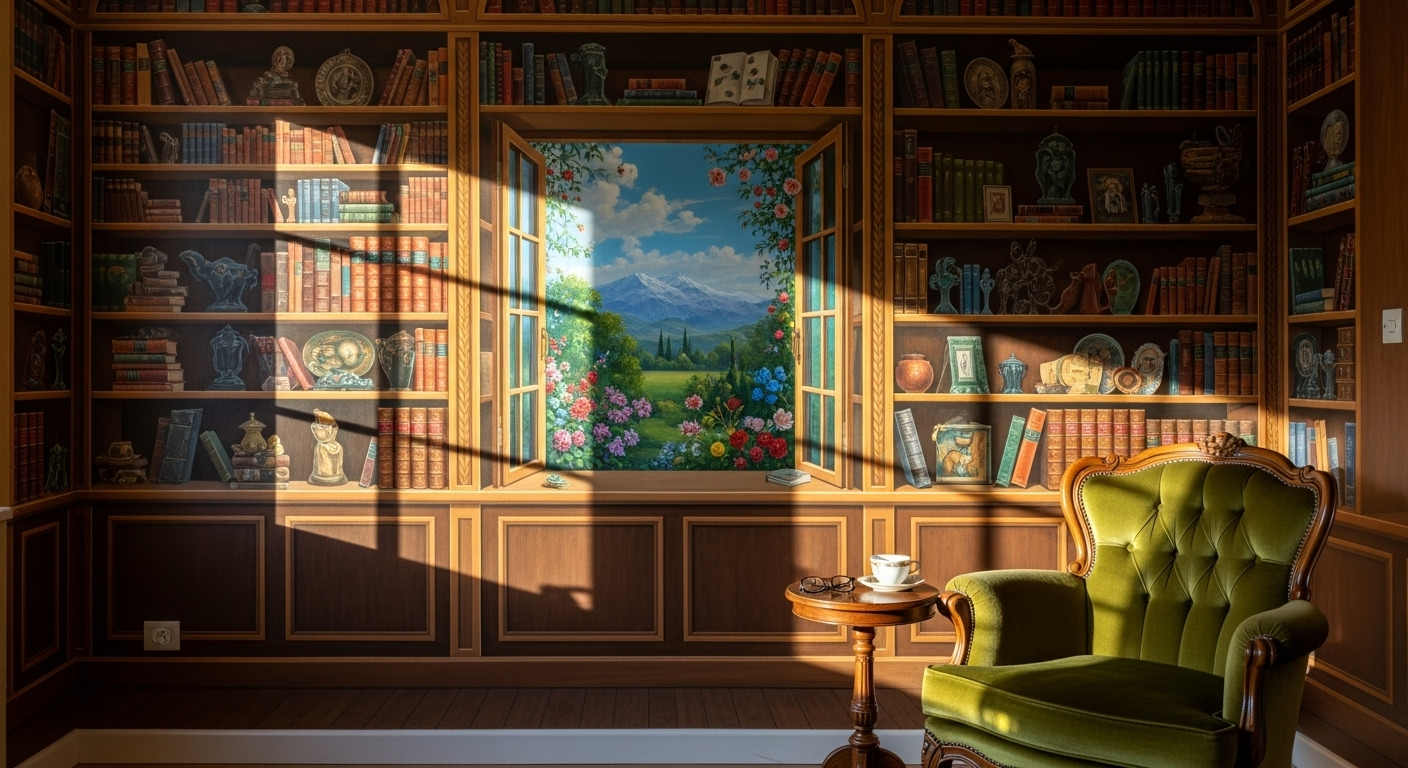The Whimsical World of Trompe L'oeil in Home Design
In a realm where imagination meets reality, trompe l'oeil emerges as a captivating art form that's transforming modern interiors. This centuries-old technique, French for "deceive the eye," is making a bold comeback in contemporary homes, blurring the lines between perception and reality. From illusionary bookcases to faux skylights, trompe l'oeil is redefining spatial boundaries and adding a touch of magic to everyday living spaces.

In the 18th and 19th centuries, trompe l’oeil found its way into domestic settings, adorning the homes of the wealthy with faux marble, draperies, and architectural elements. The technique fell out of favor in the 20th century as modernism took hold, but recent years have seen a resurgence of interest in this captivating art form, now reimagined for contemporary interiors.
The Modern Revival: Trompe L’oeil in Today’s Homes
Today’s trompe l’oeil is not just about creating convincing illusions; it’s about playfulness, creativity, and personalizing spaces. Modern designers are using this technique to add depth, character, and whimsy to homes of all sizes. From small apartments seeking to maximize perceived space to sprawling mansions looking to add a touch of intrigue, trompe l’oeil offers endless possibilities.
One popular application is the creation of faux architectural features. Painted archways, windows with scenic views, and ornate moldings can transform a plain room into a space of intrigue and beauty. These elements not only add visual interest but can also make small spaces feel larger and more open.
Practical Magic: Enhancing Living Spaces with Illusion
Trompe l’oeil isn’t just about aesthetics; it can serve practical purposes too. In urban dwellings where natural light is scarce, painted skylights can create the illusion of sunlight streaming in, brightening up dark corners and lifting moods. For book lovers with limited shelf space, a trompe l’oeil bookcase can satisfy the desire for a home library without taking up precious square footage.
Faux textures are another way to add depth and interest to interiors. From brick walls to wood paneling, these painted illusions can warm up a space without the cost and permanence of actual materials. This technique is particularly useful in rental properties where structural changes are not allowed.
The Art of Deception: Techniques and Applications
Creating effective trompe l’oeil requires skill and precision. Modern artists and designers employ a variety of techniques to achieve convincing illusions:
Perspective and shading: The cornerstone of trompe l’oeil, mastering perspective and shading is crucial for creating depth and realism.
Color theory: Understanding how colors interact and affect perception helps artists create more convincing illusions.
Texture simulation: Replicating the texture of materials like stone, wood, or fabric adds to the realism of the illusion.
Light and shadow play: Mimicking natural light sources and cast shadows enhances the three-dimensional effect.
These techniques are applied in various ways throughout the home:
Walls and ceilings: From faux windows to elaborate murals, walls and ceilings are the primary canvas for trompe l’oeil.
Furniture and accessories: Painted furniture can feature illusionary drawers or intricate inlays, while accessories like rugs can appear to have depth and dimension.
Outdoor spaces: Trompe l’oeil can transform small patios or balconies into lush gardens or scenic vistas.
The Digital Frontier: Trompe L’oeil Meets Technology
As technology advances, so does the art of trompe l’oeil. Digital projections and augmented reality are opening up new possibilities for creating dynamic, changeable illusions in the home. Imagine walls that transform with the touch of a button, or floors that appear to ripple like water as you walk across them.
3D printing is also making its mark, allowing for the creation of physical objects with trompe l’oeil elements. These innovations are blurring the line between traditional painting techniques and modern technology, offering exciting new avenues for home design.
Embracing the Illusion: Tips for Incorporating Trompe L’oeil
For those intrigued by the possibilities of trompe l’oeil, here are some tips for incorporating this art form into your home:
Start small: Begin with a single wall or even a piece of furniture to test the waters.
Consider the space: Choose illusions that complement your existing decor and enhance the room’s function.
Play with light: Use trompe l’oeil to brighten dark corners or create the illusion of natural light.
Be bold: Don’t be afraid to go big with full-room murals or unexpected elements like faux doors or staircases.
Hire a professional: While DIY options exist, complex trompe l’oeil is best left to skilled artists who can create truly convincing illusions.
The Future of Illusion: Trompe L’oeil in the 21st Century
As we look to the future, trompe l’oeil is poised to play an increasingly significant role in interior design. With advancements in materials and technology, we can expect to see even more realistic and interactive illusions. The line between physical and virtual spaces will continue to blur, offering homeowners unprecedented opportunities to customize and transform their living environments.
Trompe l’oeil is more than just a design trend; it’s a testament to human creativity and our desire to push the boundaries of perception. As we continue to reimagine our living spaces, this ancient art form reminds us that sometimes, the most captivating realities are the ones we create ourselves.





